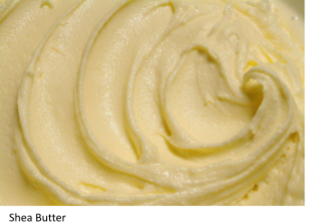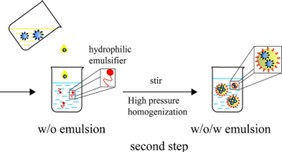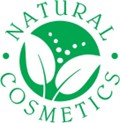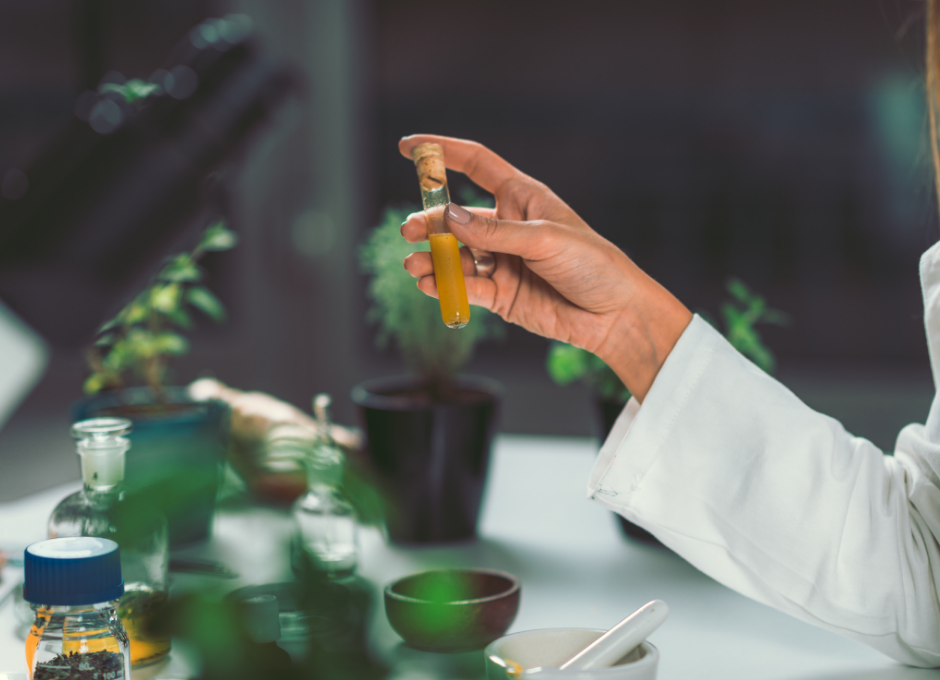Crafting your own cosmetics allows for personalization and control over the ingredients used. However, selecting the right ingredients and formulating them effectively is crucial for creating safe and functional products (Poucher & Rios, 2019). This overview explores key aspects of ingredient selection and formulation in handmade cosmetics.
When selecting ingredients for your handmade cosmetics, consider the desired outcome of the product first. For example, shea butter offers well-known moisturizing properties, while clays can help absorb oil (Edwards, 2014). Understanding your target skin type (e.g., oily, dry, sensitive) is also important. Coconut oil may be suitable for dry skin, but not ideal for acne-prone skin due to its comedogenic properties (Goh et al., 2015). Finally, opt for high-quality, ethically sourced ingredients whenever possible. Look for reputable suppliers and consider organic or natural options (Bergfeld et al., 2012).
Formulation involves more than just mixing ingredients together. Certain ingredients may react negatively with each other, so research compatibility to avoid potential issues that could affect product stability or user experience (Labadie, 2014). Using precise measurements based on established recipes or consulting a cosmetic chemist for guidance is crucial. Incorrect ingredient ratios can compromise product efficacy or even safety (A. Y. Patel et al., 2017). Preservatives are essential for extending shelf life and preventing microbial growth, especially in water-based products (Rahman et al., 2018).

Beyond these core aspects, there are additional considerations for safe and successful handmade cosmetics. Always conduct patch tests on a small area of skin before applying a new product to your entire face or body. Discontinue use if any irritation occurs (Gupta et al., 2014). Maintaining a clean and sanitized workspace throughout the creation process minimizes the risk of contamination (Ali et al., 2017).
By carefully selecting ingredients and adhering to proper formulation principles, you can create safe, effective, and personalized handmade cosmetics.
The world of handmade cosmetics beckons with the allure of personalization and control over the ingredients that touch your skin. But venturing into this creative realm requires a strong foundation, and the cornerstone of that foundation is ingredient selection. Choosing the right ingredients is paramount for creating safe, effective, and enjoyable handmade cosmetics (Poucher & Rios, 2019).
This chapter delves into the importance of ingredient selection and equips you with the knowledge to make informed choices for your cosmetic creations.
The first step in ingredient selection is identifying the desired outcome of your cosmetic. Do you crave a deeply hydrating face cream to combat dry winter skin? Or perhaps you seek a gentle cleanser for sensitive skin? Different ingredients possess unique properties that cater to specific needs. For instance, shea butter, with its rich emollient properties, offers superior moisture retention, while kaolin clay, known for its absorbent qualities, helps manage oily skin (Edwards, 2014).

Skin is as unique as a fingerprint, and understanding your target skin type (oily, dry, sensitive, etc.) is crucial for selecting compatible ingredients. Coconut oil, lauded for its moisturizing benefits, may be a perfect fit for dry skin, but for those prone to acne, its comedogenic nature (meaning it can clog pores) might be counterproductive (Goh et al., 2015). Researching the properties of each ingredient and aligning them with your specific skin type is key to crafting a product that works for you.

Beyond functionality, the quality and source of your ingredients significantly impact the final product. Look for reputable suppliers who prioritize ethical sourcing and offer high-quality ingredients. Whenever possible, consider organic or natural options, minimizing potential exposure to harsh chemicals (Bergfeld et al., 2012). Responsible sourcing not only ensures the quality of your cosmetics but also aligns with a sustainable and ethical approach to beauty.
By prioritizing thoughtful ingredient selection, you lay the groundwork for creating safe, effective, and personalized handmade cosmetics. In the following chapters, we will delve deeper into the world of formulation, exploring how to combine these ingredients to create beautiful and functional products.

In the other subchapter, it was highlighted the importance of ingredient selection. Now, it’s time to bring those ingredients together to create beautiful and functional handmade cosmetics! This subchapter explores formulation techniques for various cosmetic products, empowering you to translate your creative vision into reality.

Formulation involves more than simply mixing ingredients. It’s a delicate dance that considers compatibility, ratios, and specific techniques to achieve a stable and effective end product (Labadie, 2014). We will delve into two fundamental formulation techniques: the water-in-oil (w/o) method and the oil-in-water (o/w) method.
1.1.1.1 The Water-in-Oil (w/o) Method: For Luxuriously Rich Creams
The w/o method is ideal for creating rich, luxurious creams and balms. In this approach, water-based ingredients are gradually incorporated into a base of oils and butters. Here’s a simplified breakdown:


Remember: Preservatives are especially important in o/w products, as the water content creates an environment for microbial growth (Rahman et al., 2018).
These are just two foundational techniques. As you progress on your handmade cosmetic journey, you’ll encounter additional methods for creating specific products like lip balms, scrubs, or hair care products.
The key to successful formulation lies in understanding the properties of your ingredients, meticulous measurements, and a willingness to experiment!
The allure of natural and organic ingredients beckons many crafters of handmade cosmetics. These ingredients often evoke a sense of purity and potentially reduced exposure to harsh chemicals. But venturing into this realm requires understanding the benefits, challenges, and responsible use of natural and organic options.

Natural ingredients, derived from botanical or mineral sources, offer a treasure trove of potential benefits for your handmade creations. Here are some key advantages:
However, it’s important to remember that “natural” doesn’t always equate to “safe.” Certain essential oils, for instance, can be potent and require dilution before topical application (Goh et al., 2015).

The terms “natural” and “organic” can be loosely used in the cosmetic industry. Here’s a breakdown of certification standards to guide your choices:


Understanding these standards empowers you to make informed decisions about the level of naturalness or organic content that aligns with your values.
While natural and organic ingredients offer exciting possibilities, responsible use is paramount. Here are some key considerations:
Remember, even natural ingredients can have a powerful impact. By prioritizing research, responsible sourcing, and safety precautions, you can harness the power of nature to create beautiful and effective handmade cosmetics.
The journey into natural and organic ingredients is an enriching one. This chapter has equipped you with the knowledge to make informed choices and embrace the potential of nature’s bounty in your cosmetic creations.

This exploration has equipped you with the knowledge and skills to navigate the captivating world of handmade cosmetics. We’ve emphasized the critical role of ingredients, understanding their impact on both product quality and effectiveness (Poucher & Rios, 2019). Module 3 highlighted the importance of ingredient selection. We learned to identify key considerations like target skin type and desired outcome, ensuring ingredients are compatible and functional. By prioritizing ethical and high-quality sourcing, you not only elevate your creations but also contribute to responsible practices (Bergfeld et al., 2012). Moreover, Subchapter 2 delved into the fascinating world of formulation techniques. We explored the water-in-oil (w/o) and oil-in-water (o/w) methods, empowering you to craft a variety of products like creams, lotions, and balms. Understanding the science behind ingredient interactions, such as emulsification, is crucial for achieving stable and successful formulations (Labadie, 2014).On the other hand, subchapter 3 explored the realm of natural and organic ingredients. We learned about the potential benefits of biocompatibility, soothing properties, and sustainable appeal (A. Y. Patel et al., 2017). However, navigating certification standards and understanding the limitations of “natural” claims are essential for making informed choices (Edwards, 2014).

Throughout this journey, you’ve gained hands-on knowledge for creating formulations that meet quality standards. You’ve learned to research ingredient properties, prioritize safety through patch testing, and incorporate natural ingredients responsibly. Remember, crafting exceptional handmade cosmetics is an ongoing process. Experiment, explore new ingredients, and refine your techniques. With dedication and the knowledge gained here, you can confidently create personalized cosmetic products that not only meet customer expectations but also reflect your unique creative vision.

Key Takeaways for Crafting Confidence in Handmade Cosmetics:
